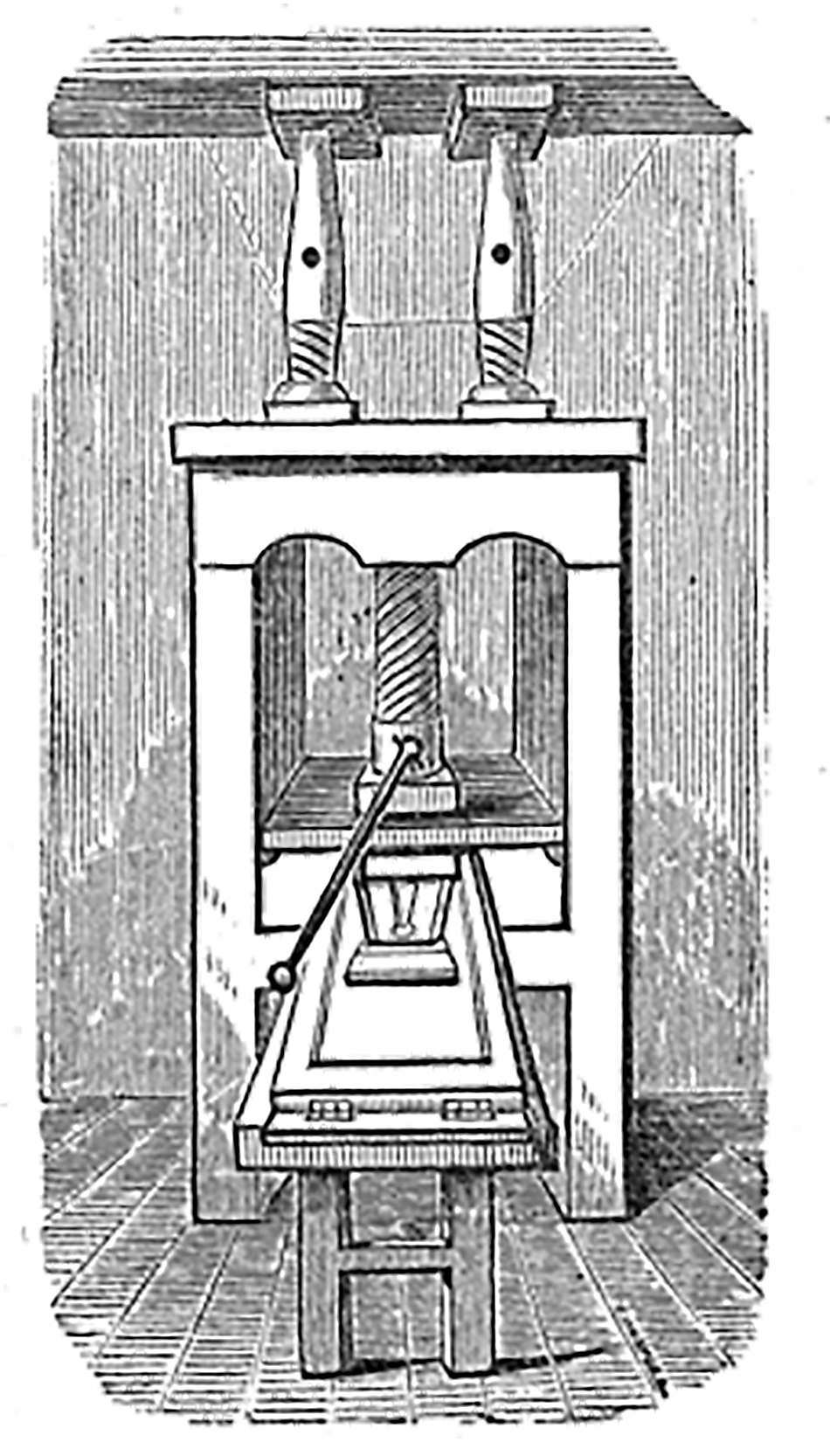“Until well into the 19th century typographical craftsmanship was passed down from generation to generation in the workshops where printing was practised, in the printing houses,” argued Frans A. Janssen in his monumental 1982 edition of David Wardenaar’s Beschrijving der Boekdrukkunst (1801), the oldest Dutch printer’s manual. Apprentice typographers learned the trade on the job; instruction manuals were wasted on them. That such books were made all the same is owing to “the relative small number of the most educated and ambitious master printers and overseers” (Janssen, ed. Wardenaar, 11). One such man was Joannes Josephus Balthazar Vanderstraelen from Antwerp who, in 1784–5, wrote an instruction manual explaining how to place type for different formats into the forme in the correct manner. In 2006 the Grolier Club managed to acquire the manuscript containing Vanderstraelen’s “Overslag-Boek.” Eugene S. Flamm, president of the Club from 2010–14 and author of the foreword to this facsimile, is understandably proud of the acquisition and of the present edition by Janssen – the expert par excellence in the field of typesetting and printing in the Low Countries. ☛ ☞
Carol Porter Grossman, The History of the Limited Editions Club
Every publisher deserves a historian like Carol Porter Grossman. This absorbing book recounts the remarkable story of the Limited Editions Club (LEC) and its offshoots, as well as that of the Club’s indefatigable and imaginative founder, George Macy, and those who kept the LEC going after his untimely death in 1956. Drawing on extensive archives at the Harry Ransom Center, Columbia University, the Newberry Library, and the Grolier Club, as well as private archives and several important oral histories, Grossman is able to reconstruct in great and fascinating detail the eight decades of fine book production by the LEC.
SHARP 25th Anniversary Research Fellowship: Report from Trude Dijkstra
Trude Dijkstra has published a report on her fantastic research project, which won one of SHARP’s 25th Anniversary Research Fellowships in 2019. You can read about the award here. Her report is attached below.
Welcome!
As SHARP president Shef Rogers states in his welcome letter, SHARP News has historically been a stimulating resource for book history reviews, updates, and bibliographies. We want to ensure this website continues and expands this tradition by becoming a thriving space for community and scholarly research. Toward that goal, we’re thrilled to announce that we have just hired a new team of editors to revitalize and bring forth new voices and ideas to our community. Please subscribe to receive our updates!
Call for Submissions: SHARP in the Classroom
SHARP News is developing a new division for writing about book history pedagogy. SHARP in the Classroom will provide tools for teaching book history as well as reflections on pedagogical practices and reviews of resources. It is our intent that this body of work will help veterans of and newcomers to book history teach across our field of knowledge. See this page for our call for submissions and to add your name to our list of reviewers.




